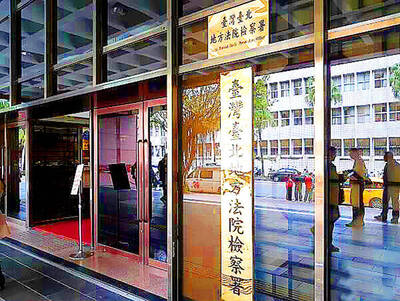President Ma Ying-jeou (馬英九) yesterday said his government would “cautiously consider” whether the nation should sign a peace agreement with China within the next decade, but added that such a move would require strong domestic backing.
“We are now thinking of cautiously considering whether we should sign a cross-strait peace agreement within the next decade, as the two sides’ relations are gradually improving,” Ma said during a press conference at the Presidential Office where he presented the latest in a series of plans for his “golden decade” blueprint for the country’s development over the next 10 years.
However, Ma, who is running for re-election in the Jan. 14 presidential election, said his administration would only do so if it had strong domestic support and if such a pact met the needs of the country. Any pact would have to be supervised by the legislature, he added.
When asked by reporters to elaborate on the specifics, such as content, preparation and a timetable, Ma first said that signing a peace agreement with China was not a priority at present, before adding that it did not feel right to present a 10-year plan that omitted any mention of a pact because that might imply Taipei would not want to sign a peace agreement in the next 10 years.
He later said the issue of an agreement with China was a public policy open to discussion and all opinions would be considered. The pact would be signed only if it were beneficial to Taiwanese, he added.
Ma did not make a mention of his previous remarks that called on Beijing to remove its missiles aimed at Taiwan as the precondition for negotiations on a cross-strait peace treaty.
Ma also said the two sides should set up representative offices in each other’s territories to deal with continuing cross-strait talks, which so far have concentrated on economic ties.
While highlighting continued reconciliation with Beijing, Ma said he would bolster Taiwan’s defenses against a possible Chinese attack.
“We need to demonstrate our resolution to defend ourselves so the public will feel confident enough to allow the government to continue reinforcing mainland ties,” Ma said.
He added that the peace initiative would not come at the expense of existing ties with the US and Japan, Taiwan’s key strategic partners.
Ma also proposed that Taiwan and China move toward a new level of cooperation on global issues, such as food safety, public health, humanitarian aid, green energy and climate change, according to a statement from the Presidential Office.
Ma vowed to continue to promote institutionalized talks between the two sides. Such talks began after Ma took office in 2008.
Ma faces a re-election challenge from Democratic Progressive Party (DPP) Chairperson Tsai Ing-wen (蔡英文). Polls indicate a close race.
In response, DPP spokesperson Chen Chi-mai (陳其邁) said under Ma’s so-called “1992 consensus” and “one China” prerequisites, peace talks would be suspected of changing the cross-strait “status quo,” which could start steering Taiwan toward unification.
“The Taiwanese people did not give President Ma the right and authority to initiate talks that would begin political negotiations between the [Taiwan] Strait and eventual unification,” Chen said.

INVESTIGATION: The case is the latest instance of a DPP figure being implicated in an espionage network accused of allegedly leaking information to Chinese intelligence Democratic Progressive Party (DPP) member Ho Jen-chieh (何仁傑) was detained and held incommunicado yesterday on suspicion of spying for China during his tenure as assistant to then-minister of foreign affairs Joseph Wu (吳釗燮). The Taipei District Prosecutors’ Office said Ho was implicated during its investigation into alleged spying activities by former Presidential Office consultant Wu Shang-yu (吳尚雨). Prosecutors said there is reason to believe Ho breached the National Security Act (國家安全法) by leaking classified Ministry of Foreign Affairs information to Chinese intelligence. Following interrogation, prosecutors petitioned the Taipei District Court to detain Ho, citing concerns over potential collusion or tampering of evidence. The

‘FORM OF PROTEST’: The German Institute Taipei said it was ‘shocked’ to see Nazi symbolism used in connection with political aims as it condemned the incident Sung Chien-liang (宋建樑), who led efforts to recall Democratic Progressive Party (DPP) Legislator Lee Kun-cheng (李坤城), was released on bail of NT$80,000 yesterday amid an outcry over a Nazi armband he wore to questioning the night before. Sung arrived at the New Taipei City District Prosecutors’ Office for questioning in a recall petition forgery case on Tuesday night wearing a red armband bearing a swastika, carrying a copy of Adolf Hitler’s Mein Kampf and giving a Nazi salute. Sung left the building at 1:15am without the armband and apparently covering the book with a coat. This is a serious international scandal and Chinese

Seventy percent of middle and elementary schools now conduct English classes entirely in English, the Ministry of Education said, as it encourages schools nationwide to adopt this practice Minister of Education (MOE) Cheng Ying-yao (鄭英耀) is scheduled to present a report on the government’s bilingual education policy to the Legislative Yuan’s Education and Culture Committee today. The report would outline strategies aimed at expanding access to education, reducing regional disparities and improving talent cultivation. Implementation of bilingual education policies has varied across local governments, occasionally drawing public criticism. For example, some schools have required teachers of non-English subjects to pass English proficiency

TRADE: The premier pledged safeguards on ‘Made in Taiwan’ labeling, anti-dumping measures and stricter export controls to strengthen its position in trade talks Products labeled “made in Taiwan” must be genuinely made in Taiwan, Premier Cho Jung-tai (卓榮泰) said yesterday, vowing to enforce strict safeguards against “origin laundering” and initiate anti-dumping investigations to prevent China dumping its products in Taiwan. Cho made the remarks in a discussion session with representatives from industries in Kaohsiung. In response to the US government’s recent announcement of “reciprocal” tariffs on its trading partners, President William Lai (賴清德) and Cho last week began a series of consultations with industry leaders nationwide to gather feedback and address concerns. Taiwanese and US officials held a videoconference on Friday evening to discuss the